 EUROPE:
EUROPE:
Following the end of the 'Great War' and the Peace of [Zurich] in 1895, Europe enjoys a period of relative peace and calm. Although standards of living are often behind those in the Far East, or in the wealthy parts of the Varakan Empire, there is steady improvement and technological progress. The inventions of the east are swiftly copied. By 1940 the Furotocans are experimenting with the concept of radar, and the Aarut are building electronic calculation machines, partly to ease the burden of governing their enlarged empire.
Apart from the Nadzavosk-Poneb conflicts on the edge of Europe, there is only one major war, which takes place on the island of Graelund [Britain]. Elsewhere, there are few restrictions on travel between different countries, especially for celebrities and the upper classes. Anti-war movements are popular - some are tied to obscure spiritualism such as the Suloist movement (influenced by Lantanism and other foreign religions), while others are tied to radical social theories (influenced by the works of Krashenist philosophers, which are brought back to Europe by aristocrats and collectors travelling overseas). Modern philosophers promote the concept of a shared European identity.
The Rosk-Amestrian war gradually fades into a small-scale conflict against partisans and guerrillas. The Rosk Empire faces waves of unrest at home, partly due to the ongoing fighting. Roskian forces gradually retreat to more secure territory, while the Amestrian Union is itself overtaken by reformists and anti-war movements, giving rise to the 'Republic of Serezyl' with its ideology of modernisation and peaceful Olan-Amestrian-Savisian coexistance. Only the isolated, semi-official state known as the 'Patriotic Union of Amestria' continues to support guerrillas against the Rosk, and is subject to Roskian reprisals including air bombardments in later years.
In 1911 the Great North Polar Expedition, commissioned by the Imperial Aarut Republic, successfully reaches the north pole. This achievement is reliant on Lanverg and Asuat expertise, and helps gain public favour towards granting more autonomy and freedoms to the northern territories of the empire.
A series of referendums sees more states break away from the Argine Union, and leads to the return of an independent Amarilse kingdom led by ambitious industrialists.
Moderate reforms are carried out across Europe. Constitutional monarchies become the norm outside the Furotocan sphere. The Rosk Empire is left as the only hard-line authoritarian power. At same time, there is disillusionment with Furotocan ideals, as the new liberalist states struggle with the same old social/economic problems. Things are made worse by the hundreds of thousands of displaced peoples left over from the Great War. There are several deadly outbreaks of disease, and several banking crises between 1910 and 1930 that affect all of Europe. The Furotocan countries also prove susceptible to corrupt leaders and rigged elections. Emigration to Aarut colonies and elsewhere becomes a more appealing option.
In many ways, there is now little real difference between the two spheres of Europe. But tensions remain. Fundamentally, each side blames the other for the majority of its problems. While the upper classes openly debate the merits of Furotocanism vs Authoritarianism, behind closed doors the battle plans are constantly being drawn and re-drawn for the imagined Second Great War. The advent of new technology (automobiles and aircraft) creates a deep sense of unease and insecurity, convincing many governments to greatly increase military spending, even if it causes more economic problems.
---
It is against this backdrop that the Kronahar Civil War takes place, between 1926-29 (although by no means the first civil war on that island, it is certainly the most noteworthy). Since the end of the Great War, a pro-Furotocan liberalist movement had been clashing with the conservative monarchist government. Kronahar is then hit hard by the banking crises of the early 1920's, which allows a hard-line nationalist movement to gain strength as a major third party. By 1924, this is led by Aerath Jurance, a charismatic leader and self-styled philosopher who introduces elements of both Furotocanism and Krashenist theory from India, advocating a classless society and 'strength through unity', in what becomes known as 'Jurancism'. In 1926, Jurance's followers take advantage of a crisis in government, and take control of the capitol, [Reading]. Loyal government forces are soon dealing with army mutinies and uprisings in other cities, most of which are actually unrelated to Jurance's rebellion to begin with.
Aarut industrialists had established profitable metalworking enterprises across Kronahar, thanks to the island's abundant coal and iron ore, and they are eager to protect their investments. A swift donation to the Aarut Imperial Parliament ensures they vote in favour of an armed expedition to restore order in Kronahar, even before it is clear that the Jurancist rebellion will succeed. Indeed, the arrival of Aarut troops and ships allows Jurance to turn the war into a fight for sovereignty, and a chance for Kronahar to finally its rightful place in the world.
After forcibly uniting the rebel factions, the Jurancists find themselves fighting against loyalists and the Aarut expedition (with veteran troops from all across their dominions), as well as troops from Rithland and the Argine Union. Most of the northern states of Europe are hostile to the Jurancists - the Aarut in particular do not wish to see such a 'rogue state' appear on their doorstep, and their desire to avoid 'another Nemarthia [Spain]' ensures their expedition remains committed to the fight. In contrast, the Jurancists are only able to call upon a handful of foreign volunteers, mostly from Nemarthia. As with the Panto in north America, the Jurancists also face a naval blockade, and numerous aircraft and motor vehicles, of which the rebels have very few themselves - although, a handful of captured 'groundships' [basic tanks], built for the Kronahar government before the war, are used to good effect by the Jurancists in several battles, and convince the Aarut and others to put more effort into developing armoured vehicles in the following years.
Inevitably, the Jurancist forces are worn down and defeated. Most of the country is retaken for the monarchy by the end of 1926, but it takes another two years to put down the last uprisings and crush the last rebel strongholds in the remote mountains of [Wales] (there are rumours that the Aarut use poison gas against the last rebel strongholds, but this is never proven). Aerath Jurance is killed in a shoot-out in a remote farm in 1929.
The war is a disaster for Kronahar's economy, and ends with the country (and its remaining overseas colonies) placed firmly in the Aarut sphere, along with the northern kingdom of Rithland where many of the Aarut industrialists have transferred their operations (speeding the growth of [Glasgow] as an industrial centre). But it is a shock to the northern states of Europe, and to their dismay the ideology of Jurancism spreads to the mainland and begins to slowly gain popularity among the disenchanted masses. The war also brings out a new generation of talented generals and leaders in the Kronahar kingdom.
---
Although the Furotoca of Curias had given no real support to the failed Jurancist revolution, the crushing response of Aarut and its allies is seen by the Furotocans as a resurgence of authoritarian militarism. A hawkish faction led by the charismatic Firio Teselico, previously on the sidelines, is able to gain more support in the late 1920's and early 1930's, eventually being voted into power. There is an equal reaction from other side, as the Aarut and their allies begin to harden their stance towards the Furotocans. Attitudes shift back into mutual antagonism and paranoia, especially as a new generation, one not directly involved in the Great War, begins to take up positions of power on both sides.
Tensions soon reach such heights that some Furotocan leaders call for a pre-emptive strike against their northern neighbours - during the infamous 'Norgalik Bridge' incident, Furotocan troops under the command of Lukio Teselico (the hot-headed Furotocan general and the younger brother of Firio), are poised to invade the Argine Union, but the hastily-organised operation is called off at the last minute by a mutiny in the army high command and several members of the government. It is never made clear if Firio ever gave his personal support for the invasion plan, but his attempts to keep Lukio out of trouble leave both of them discredited.
The whole incident causes uproar in the Furotocan people and across Europe, and leads to a swift change of government in the Furotoca, brining moderates back into power, if only for a few years. This in turn leads to the Great Furotocan Union in 1935, as the moderate governments of Curias and Ormiduan Alliance finally negotiate a way through the obstacles that had stalled discussions for decades. The struggling Orimudan economy needs more direct help from the Curians, who in turn are glad to have a boost to their power and prestige.
The northern states react with a mix of fear, anger and apathy towards the expansion of the Furotoca. Firio Teselico never falls far from power and is able to regain prominent position in the Furotocan government by 1940, continuing to campaign for increased military spending, and overseeing the development of new aircraft and 'groundships'.



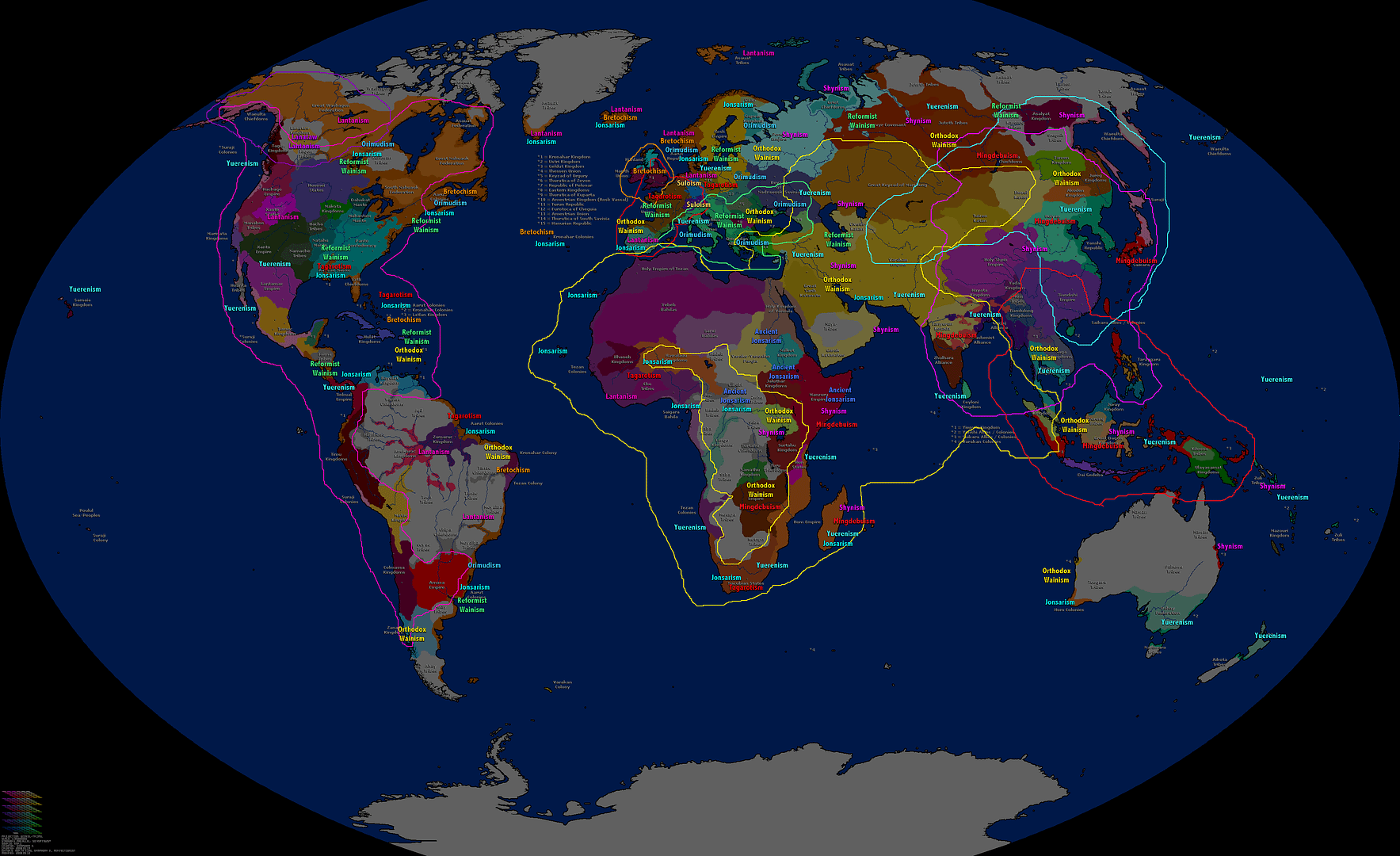
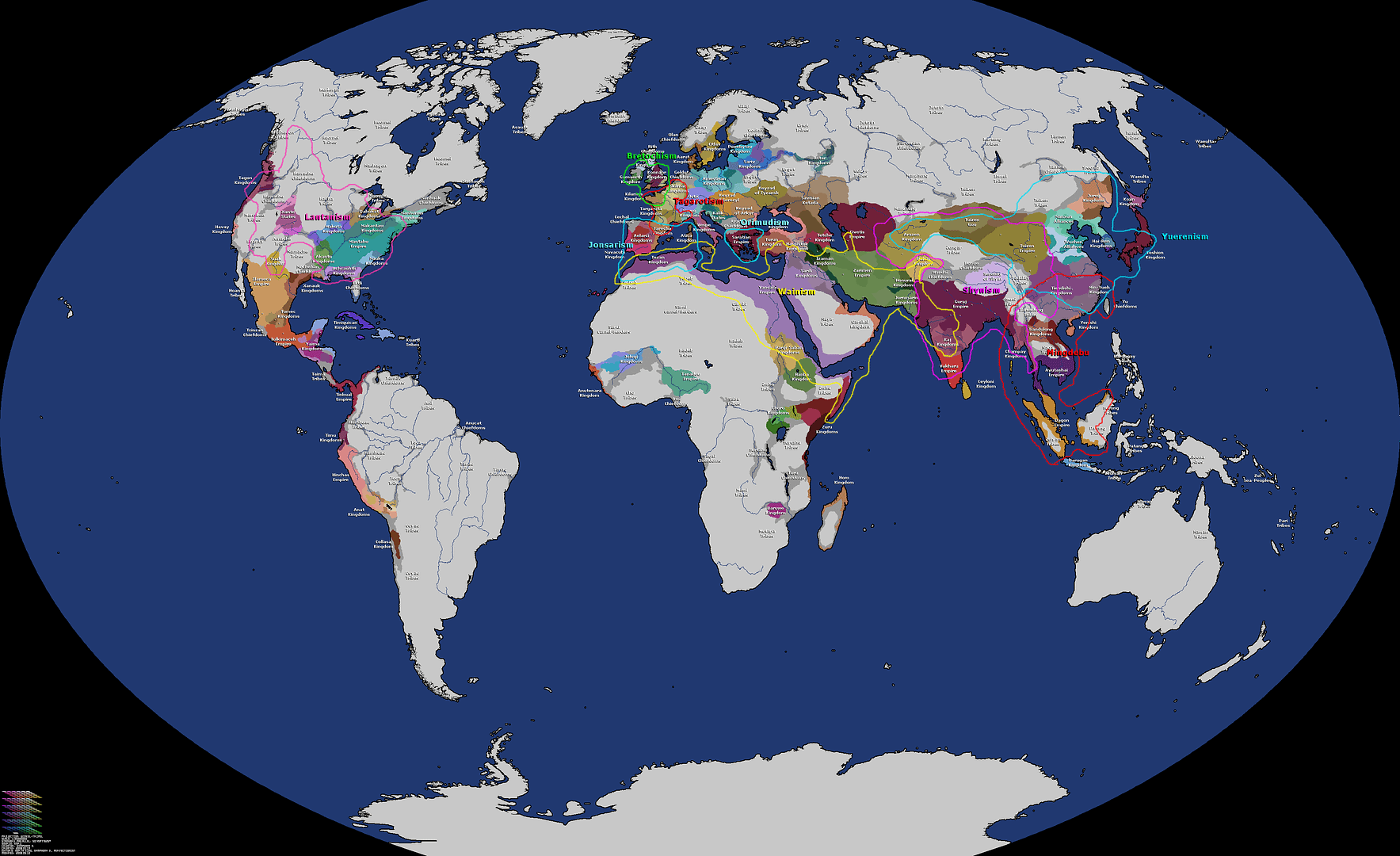




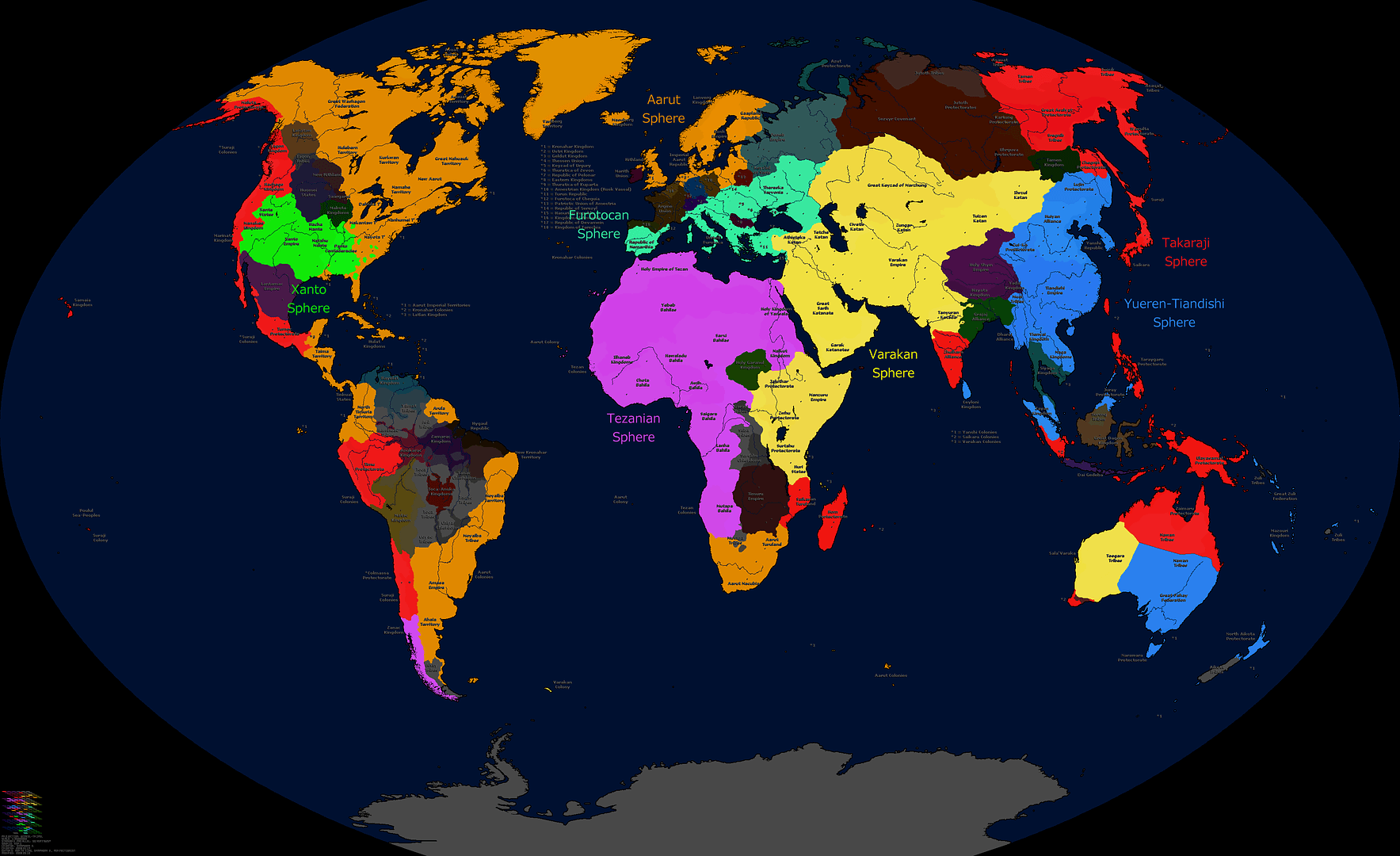
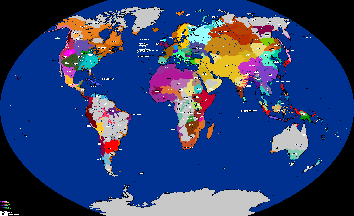
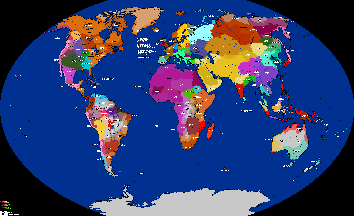







 . The fight is over your homeland, while the Aarut core cities and industry are left in peace. They have a trade empire, and long-established naval supremacy, and a head-start in terms of technology and industry, and gained more manpower this time…
. The fight is over your homeland, while the Aarut core cities and industry are left in peace. They have a trade empire, and long-established naval supremacy, and a head-start in terms of technology and industry, and gained more manpower this time… On the upside, you have influence in their new colonial territories.
On the upside, you have influence in their new colonial territories.
